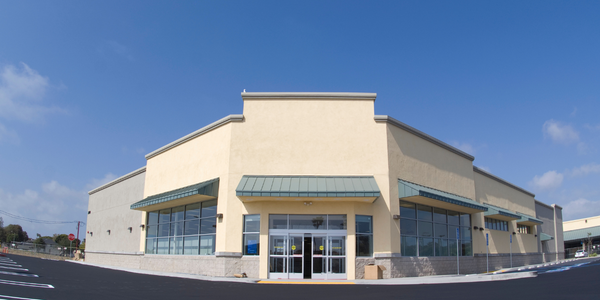公司规模
Large Corporate
地区
- America
国家
- United States
产品
- Cloudinary
技术栈
- Adobe Scene7
- FTP
实施规模
- Enterprise-wide Deployment
影响指标
- Productivity Improvements
- Customer Satisfaction
技术
- 平台即服务 (PaaS) - 数据管理平台
适用行业
- 服装
适用功能
- 销售与市场营销
- 商业运营
用例
- 库存管理
- 供应链可见性(SCV)
服务
- 软件设计与工程服务
关于客户
GUESS? Inc. 设计、营销、分销和授权一系列现代服装、牛仔布、手袋、手表、眼镜、鞋类和其他相关消费品。GUESS 产品通过品牌 GUESS 商店、全球百货商店和专卖店以及覆盖 55 个国家的电子商务网站进行销售。GUESS 网站充当虚拟店面,既销售其产品,又推广其品牌。这些网站以易于浏览的体验展示 GUESS 产品,让客户可以查看和购买其服装和配饰系列。
挑战
GUESS 依靠 Adobe Scene7 来管理其在线商店的图片。然而,Scene7 是一款依赖 Flash 的产品,它使工作流程和现代技术更新更具挑战性。随着现代浏览器逐步淘汰 Flash,GUESS 开发人员难以为客户提供高质量的网络体验。GUESS 使用的系统非常不稳定,经常出现瓶颈。图片上传会失败,照片编辑器必须裁剪照片,留出多余的空白,以确保它们在网站上正确显示。有时,图像在网络上呈现后看起来不如原始图像清晰和高保真。这些挑战不仅对开发团队来说是个大问题。它们也让潜在客户感到沮丧。图像越大,页面加载时间越慢,访问者也会不必要地占用带宽。
解决方案
GUESS 进行了全球迁移,在其工作流程中用 Cloudinary 取代了 Adobe Scene7。一旦在 GUESS 摄影棚拍摄图像或在 Photoshop 中创建图像,就可以通过 FTP 直接批量上传到 G-Image——这是一种定制的自主解决方案,通过 API 充当 Cloudinary 的管道。此过程允许对图像进行正确的分类和标记。然后使用 Cloudinary 自动化来调整图像 URL,GUESS 能够确保所有图像都针对大小、格式进行了优化,并正确呈现,无论使用哪种设备或浏览器。GUESS 上传每张图片的单一版本,并使用 Cloudinary 根据视口、浏览器和其他因素自动缩放图像,而无需太多手动干预。这比以前的解决方案容易得多,以前的解决方案需要摄影棚执行额外的步骤,例如自定义裁剪和填充,以确保图像正确显示。
运营影响
数量效益

Case Study missing?
Start adding your own!
Register with your work email and create a new case study profile for your business.
相关案例.

Case Study
Fire Alarm System and Remote Monitoring Sytem
Fire alarm systems are essential in providing an early warning in the event of fire. They help to save lives and protect property whilst also fulfilling the needs of insurance companies and government departments.Fire alarm systems typically consist of several inter-linked components, such as smoke detectors, heat detector, carbon monoxide, manual call points, sounders, alarm and buzzer. The fire alarm system should give immediate information in order to prevent the fire spread and protect live and property.To get maximum protection a shoe manufacturer in Indonesia opted for a new fire alarm system to monitor 13 production sites spread over 160 hectars. Although the company had an existing fire alarm system, it could not be monitored remotely.It was essential that the new system would be able to be monitored from a central control room. It needed to be able to connect to the existing smoke detector and manual call point. Information should be easily collected and passed on to the Supervisory Control and Data Acquisition (SCADA) system. Furthermore, the system should have several features such as alarm management, auto reporting, being connected to many client computers without additional cost, and run 24/7 without fails. The company also needed a system which could be implemented without changing the architecture of the existing fire alarm system.

Case Study
IoT Applications and Upgrades in Textile Plant
At any given time, the textile company’s manufacturing facility has up to 2,000 textile carts in use. These carts are pushed from room to room, carrying materials or semi-finished products. Previously, a paper with a hand-written description was attached to each cart. This traditional method of processing made product tracking extremely difficult. Additionally, making sure that every cart of materials or semi-finished products went to its correct processing work station was also a problem. Therefore, the company desired an intelligent solution for tracking assets at their factories. They also wanted a solution that would help them collect process data so they could improve their manufacturing efficiency.

Case Study
Retailer Uses RFID Scanner to Improve Efficiency
Patrizia Pepe wished to improve the logistics of their warehouse: accepting incoming goods from their production sites, movement of items throughout
the warehouse, and packaging of goods for distribution to the retail locations. They initially tried to use barcodes for this function. Because barcodes must be individually scanned within a line-of-sight, the acceptance of goods coming into the warehouse was too time consuming. Working with the University of Florence, Patrizia Pepe instituted a five-month pilot project beginning in August of 2009 to test the validity of an RFID solution. The pilot involved tagging of about 60,000 items for the second seasonal collection, and convinced the company to move forward with tagging all items.

Case Study
Monitoring and Controlling Automatic Mixing and Dispensing Machines
As technology advances, textile manufacturing has been transformed from a labor-intensive to a partially or fully automated industry. Automation is significant in all segments of textile production - from spinning to printing, and textile machinery manufacturers are constantly searching for new technologies and automation processes will increase the productivity of their machines. The color paste mixing and dispensing machine is an essential part of the printing and dyeing process. With the advantage of automatically computerized controls and database management, the system can significantly improve its dispensing precision, working efficiency and production quality as well as reducing material consumption.





